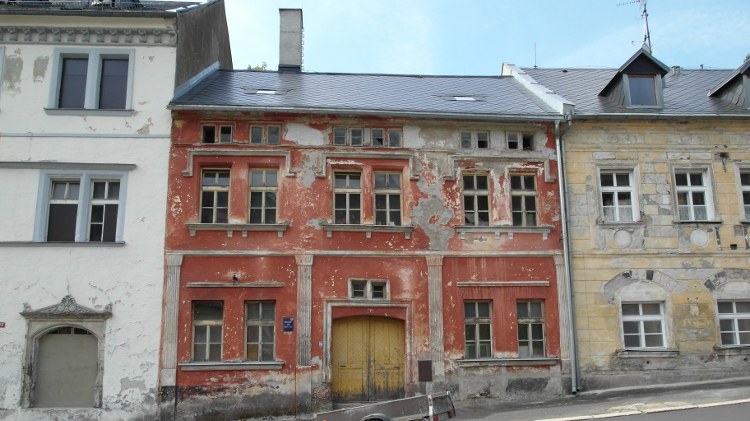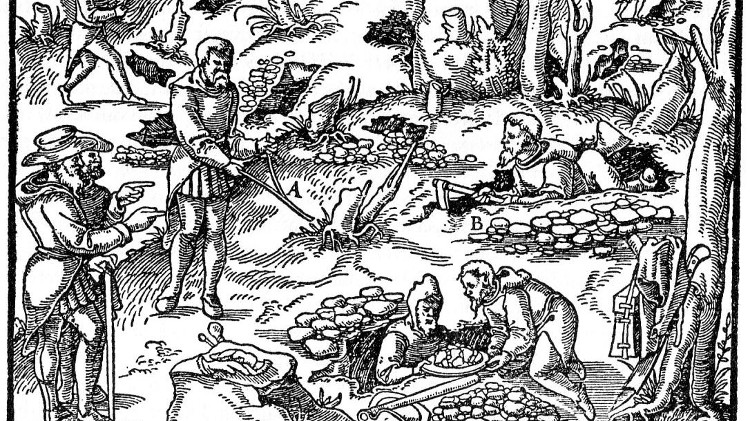The Temple of Hathor in Dendera. Steve F.E. Cameron/Wikimedia
Mining expeditions in ancient Egypt, where the sun god Ra’s body was made of gold and miners had a patron goddess in Hathor, were not only motivated by economics and politics but seen as a necessary religious duty. Egypt’s kings and queens hoarded iron they saw as sent from the heavens, and gold, silver and gemstones extracted in state-run mines across the region to promote their own semi-divine status.
Ra was said to have hair made from lapis lazuli, bones of silver or iron, and was often referred to as a “mountain of gold” on account of his golden flesh. As a result, gold had great religious significance: it symbolized eternal life and was used in royal funerary equipment – including masks, resins, ornaments, coffins and garments – to guarantee rulers’ smooth transition to the afterlife as immortal gods.
In royal tombs dating from the New Kingdom period (16th to 11th century BC), the sarcophagus chamber was known as the “house of gold.” The sister goddesses Isis and Nephthys were often inscribed at the bottom of royal coffins, mourning prostrate on the hieroglyphic sign for gold.
The lavish tomb of 14th-century BC King Tutankhamen was crammed with gold items. Three coffins were nestled inside each other, and the innermost one was made of solid gold and weighed 110 kilograms. Tutankhamen’s elaborate death mask weighed over 10 kg and was created from two sheets of hammered gold. There were also miniature gold coffins holding his internal organs.
Gold was central to the concept of sacred kingship, where kings claimed to be direct descendants of Ra, and intermediaries between mankind and the gods. As such, kings initially kept a monopoly on gold items like furniture, weapons, clothes, jewelry and utensils. However, there is evidence that from the Middle Kingdom (21st century BC) onwards this privilege was extended to high-ranking court officials, generals and priests.
Related: Egypt re-opens gold concessions to foreign mining companies
Iron was also revered by the ancient Egyptians. Many historians believe it was more prized than gold because it was scarce and fell from the sky in the form of meteorites – seemingly a gift from the celestial gods. Iron smelting was not invented until sixth century BC, so meteorites were the only source of the metal available. In hieroglyphic language it was called ‘ba-en-pet’ which translates as metal from heaven.
A necklace dating from 3,200 BC highlights iron’s high status. Iron beads were strung alongside other precious metals and gemstones including lapis lazuli, gold and carnelian. To make the beads, the meteoric metal was carefully hammered into thin sheets and then rolled into tubes. Tutankhamen’s tomb also included iron jewelry and daggers.
While Ra was associated with gold, Hathor, who was simultaneously his mother, daughter and wife, was the patron saint of miners. Temples were erected to her at most mining camps, including turquoise, copper and malachite mines in the Sinai, copper mines in Timna (now southern Israel), and gneiss quarries in the southern Egyptian desert.
The remains of a 12th-century BC temple to Hathor still stand near the ancient copper, turquoise and malachite mines at Serabit el-Khadim in the Sinai. Egyptologists believe miners camped out in dug-out rock caves nearby so Hathor could tell them the whereabouts of turquoise while they dreamt. Commemorative stones and slabs left by mining exhibitions in the temple were dedicated to the goddess, “our lady of turquoise.”
Inscriptions at the temple to Hathor at her cult centre in Dendera reveal ancient Egyptians’ broader cosmological take on mining. In the “silver chamber,” kneeling figures representing Egypt’s different metal-producing regions offer gold, turquoise, jasper, calcite, copper, carnelian, galena, green feldspar, lapis lazuli and silver to the goddess. Hieroglyphic text explains that the offerings to Hathor allowed the temple to function and exist, in the same way mining and the accumulation of minerals was central to maintaining the harmony of the universe itself.
Experts believe Hathor’s popularity with miners is at least partly derived from her role as patron saint of sycamore and acacia trees. Ancient prospectors believed the presence of acacias indicated copper and lead ores underneath and used the trees as markers for new exploration ventures. Acacia wood was also used for pit props in gold mines.
The wealth of mineral resources in ancient Egypt was legendary among contemporary civilizations. In the 14th century BC, a Mesopotamian king pressed his ally pharaoh Amenhotep III to send him more gold because “gold occurs in Egypt like sand on the road.’’ All the same, ancient Egyptians mined very little of the precious metal by today’s standards. A 2001 study estimated that only 6,000 kg of gold was produced in 3,000 years of Ancient Egyptian civilization. In comparison, 163,000 kg of gold was produced in Canada in 2017 alone.




